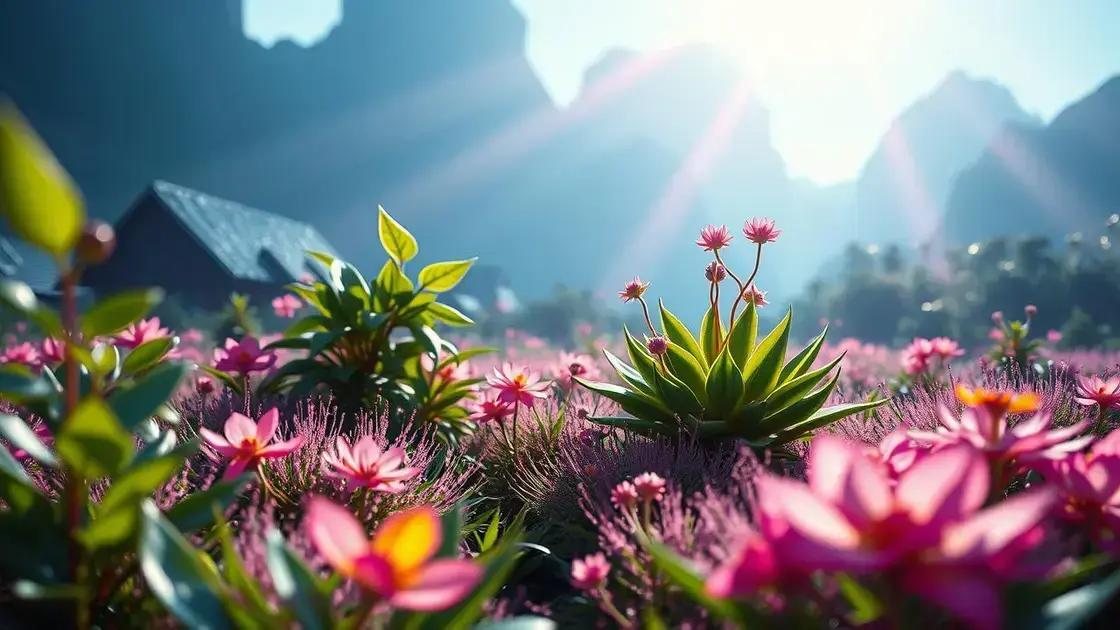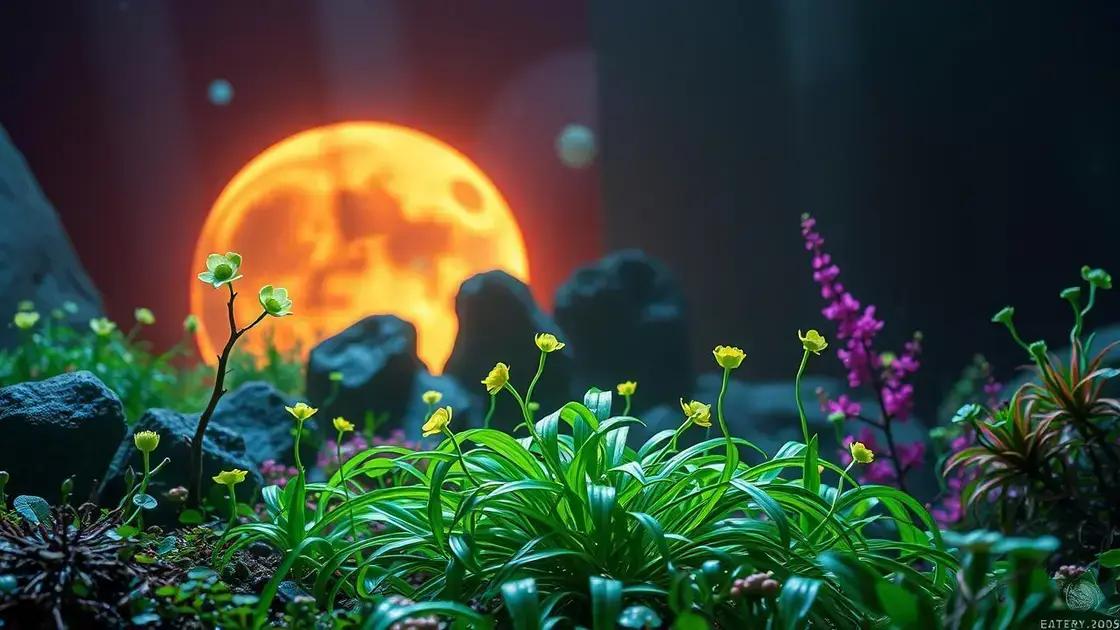How to Care for a Dew Plant: 5 Essential Tips for Thriving Growth
How to care for a dew plant is a question that sparks interest among gardening enthusiasts. These unique and captivating plants charm with their appearance and intriguing care requirements. Imagine nurturing lush, vibrant greenery that thrives both indoors and outdoors. Ready to discover how to foster the best conditions for your dew plant? Let’s dive into some essential tips to ensure your plant flourishes!
Table of Contents
ToggleEssential watering techniques for dew plants
How to care for a dew plant focuses heavily on proper watering techniques, as these plants thrive in moist, well-draining soil. Understanding their watering needs is crucial for their growth and overall health. Here’s a breakdown of essential watering techniques to help your dew plant flourish.
Understanding the watering needs of dew plants
Dew plants prefer soil that is consistently moist but not soggy. Overwatering can lead to root rot, while underwatering can stress the plant. Here are some aspects to consider:
- Check the top inch of soil; if dry, it’s time to water.
- Water thoroughly until excess drains from the bottom.
- Avoid letting the plant sit in water.
Frequency of watering for dew plants
The frequency of watering depends on the environment. Factors include temperature, humidity, and pot size. Consider these guidelines:
- In warmer months, water your dew plant every 4-7 days.
- In cooler months, reduce watering to every 10-14 days.
- Always adjust based on the plant’s response and soil moisture.
Best practices for watering dew plants
To ensure your dew plant receives adequate hydration, follow these best practices:
- Use lukewarm, distilled, or rainwater when possible to prevent shock.
- Consider using a moisture meter for accurate readings.
- Rotate your plant periodically to ensure even exposure to light and moisture.
Impact of climate on watering
The climate around your dew plant significantly influences watering needs. For instance, humid environments may require less frequent watering. If you’re exploring indoor gardening techniques, take note of these climate factors:
| Climate Type | Watering Frequency | Soil Type |
|---|---|---|
| Humid | Every 7-10 days | Well-draining mix |
| Dry | Every 3-5 days | Moisture-retentive mix |
| Moderate | Every 5-7 days | Standard mix |
By paying attention to these factors, you will better understand how to care for a dew plant and its specific watering needs, leading to a healthy and vibrant plant.
Sunlight requirements to boost your dew plant’s health

Sunlight requirements to boost your dew plant’s health are essential for ensuring the vibrancy and growth of your dew plant. These unique plants thrive in bright yet indirect light conditions, which mimic their natural habitats. Understanding the nuances of their sunlight needs can significantly impact their well-being.
Optimal light conditions for dew plants
Dew plants flourish under specific light conditions, and getting this right is key. Consider these optimal light factors:
- Bright, indirect sunlight is ideal to promote healthy growth.
- Avoid direct afternoon sun, which can scorch the leaves.
- Rotate the plant periodically to ensure even exposure to light.
Identifying light deprivation symptoms
Knowing how to identify when your dew plant is not getting enough light is essential. Watch out for these signs:
- Leggy growth where the plant stretches towards the light source.
- Yellowing leaves, indicating stress and insufficient light.
- Poor flowering or no new growth, which signals energy deficiency.
Adjusting light exposure seasonally
The changing seasons can impact sunlight availability. Here’s how to adjust:
- In summer, ensure your dew plant gets filtered light to avoid overheating.
- In winter, consider moving your plant closer to windows to maximize natural light.
- If you are exploring indoor gardening techniques, using artificial light may help during the dark winter months.
Creating an ideal light environment
Creating the perfect light environment isn’t difficult. Follow these tips:
- Use sheer curtains to diffuse strong direct sunlight.
- Consider LED grow lights if natural light is insufficient.
- Place your dew plant near south or east-facing windows for ample light exposure.
By recognizing and meeting the sunlight requirements to boost your dew plant’s health, you pave the way for a flourishing and robust plant.
Top pests to watch out for in dew plant care
Top pests to watch out for in dew plant care are crucial for maintaining a healthy plant. These pests can cause damage if not addressed promptly, leading to poor growth or even death of your dew plant. Here’s an overview of the most common pests and how to deal with them effectively.
Common pests affecting dew plants
Knowing the typical invaders is the first step in protecting your dew plant. Here are the main pests to look out for:
- Spider mites – Tiny but damaging, they suck out the plant’s sap.
- Aphids – These small bugs can weaken your plant by feeding on new growth.
- Mealybugs – Recognizable by their cotton-like appearance, they thrive in warm, humid conditions.
Identifying pest damage
Recognizing the signs of pest infestation is key to preventing further harm. Symptoms include:
- Discolored or yellowing leaves indicating sucking pests.
- Webbing between leaves, a sign of spider mites.
- Sticky residue on leaves, known as honeydew, caused by aphids.
Effective pest control methods
Controlling pests involves both prevention and treatment strategies. Here are several methods you can implement:
- Regularly inspect your plant for early signs of pests.
- Use neem oil or insecticidal soap as eco-friendly remedies.
- If infested, isolate the plant to prevent pests from spreading.
Maintaining plant health to deter pests
Healthy plants are less susceptible to pests. To maintain your dew plant’s vigor:
- Ensure proper watering and sunlight exposure to foster growth.
- Fertilize appropriately, providing essential nutrients for resilience.
- Consider exploring indoor gardening techniques for optimal care practices.
By being vigilant about the top pests to watch out for in dew plant care, you enhance your chances of keeping your plant healthy and thriving.
In conclusion
Caring for a dew plant requires attention to various factors, from watering techniques to light conditions and pest management. By implementing the essential tips outlined in this guide, you can cultivate a lush and healthy dew plant that thrives in your home. Remember to monitor your plant regularly, provide optimal conditions, and stay proactive in handling any pest issues. For additional insights, check out these tips on enhancing your indoor garden to take your plant care skills to the next level.

